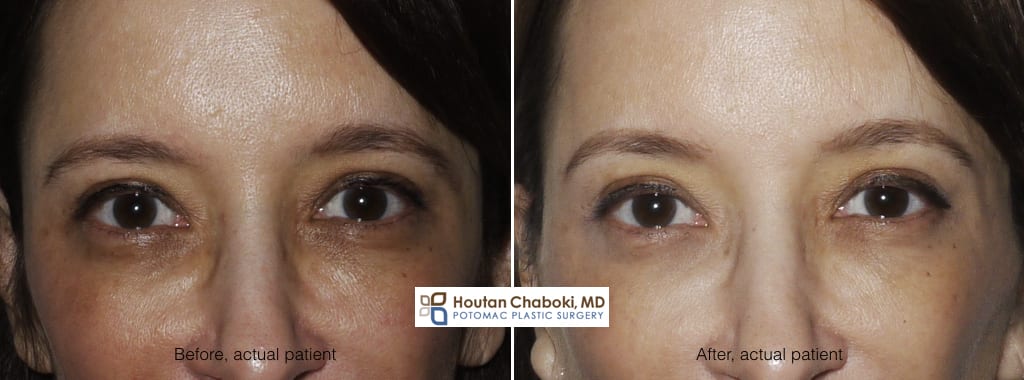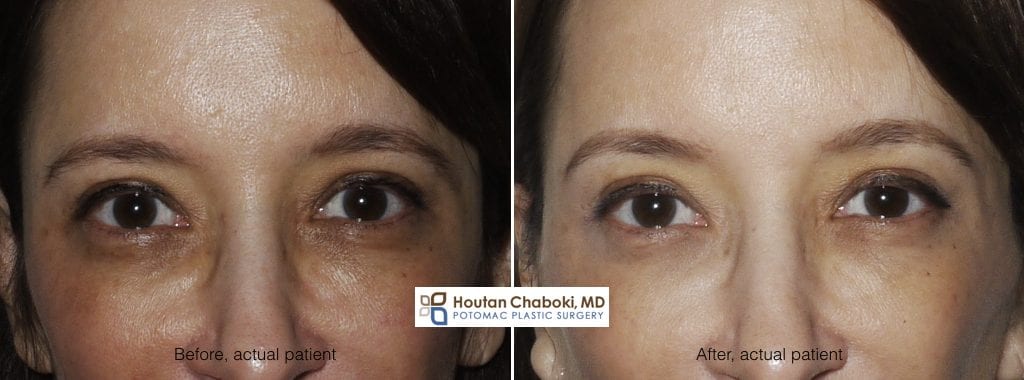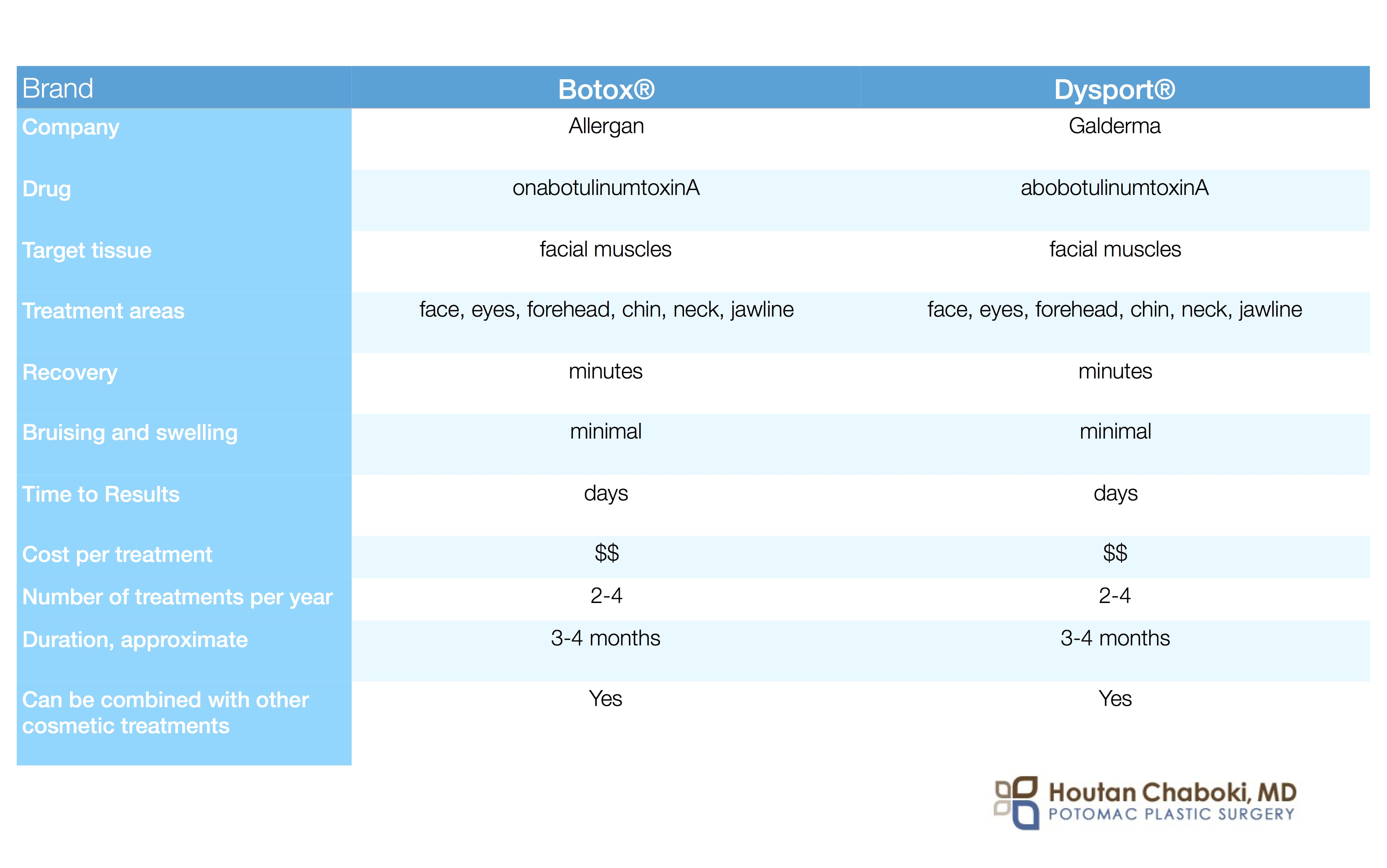
Before and after Dysport injection. Cosmetic treatments performed in plastic surgery and dermatology offices. Results show smoother skin and elevated brow in this Washington DC patient.
Botox is one of the most popular treatments in a plastic surgery office. As part of a liquid facelift, it can be used for a variety of treatments to smooth forehead wrinkles, raise eyebrows, soften smoker’s lines, slim the jawline, and lift the neck. These office procedures have minimal downtime to prevent and treat wrinkles.
Over 20 years ago, Botox was used just for medical treatments, such as for eyes muscle spasms and twitches. Botox is still being used for many non-cosmetic purposes. Doctors who used Botox in the face subsequently noticed that their patients had smoother skin. The rest is history.
Botox is the older, traditional method to relax wrinkles without surgery. It’s been used for years, and considered a safe method for temporary wrinkle reduction. Newer formulations of the drug are actively being researched by drug companies to improve the efficacy of wrinkle improvement. Dysport is one of these newer alternatives that works similarly to improve one’s appearance. Dysport was FDA approved in 2009 for cosmetic treatments. There are other similar anti-wrinkle and anti-aging products in the pipeline, so we may have even more alternatives to Botox available within a few years.
How does Botox and Dysport work
Botox (onabotulinumtoxinA) and Dysport (abobotulinumtoxinA) are slight variations of botulinum toxin type A, a protein molecule that temporarily effects muscle activity. These treatments address fine lines and wrinkles by relaxing the muscle tissue. This relaxation of facial muscles reduces the appearance of wrinkles in the treated area.
Both are generally considered safe with similar side effects. They both start working within a few days and last several months.
Botox and Dysport treatment areas
Botox and Dysport have been used in the following areas similarly:
- forehead
- crow’s feet
- in-between eyebrow
- chin
- jawline slimming
- neck
- lip lines
- nose
Differences between Botox and Dysport
Many physicians feel that there are more similarities than differences between Botox and Dysport, and those differences might not always be clinically significant. Some differences that have been suggested in the research literature and are still being studied and debated:
- Dysport may not last quite as long, resulting in shorter duration of results
- Dysport has a slightly quicker onset of action, 2-5 days vs 4-7 days for Botox, so results start earlier
- Dysport spreads to a wider area from the injection site, which may be an advantage or disadvantage based on specific facial area
- More Dysport is needed to get the similar result as Botox
One other difference is that these treatments are not directly interchangeable, ie. 20 units of Botox is not the same as 20 units of Dysport.
Combine Botox or Dysport with other cosmetic treatments
Both Botox and Dysport are commonly combined with other office treatments to improve one’s appearance. For example, patients often have brows lifted with Botox/Dysport and cheeks augmented with fillers at the same time. Speak with your facial plastic surgeon on what combination treatments are appropriate.
Overall, Botox and Dysport are similar drugs to treat wrinkles. There isn’t a “best” option. Some patients and doctors may prefer one over the other. In double-blind clinical research studies, both the patient and the doctor were unable to tell the results apart. Keep in mind that the person injecting may be just as important as the treatment itself.
Have you considered Botox or Dysport injections? Share your thoughts below.



Leave a Reply